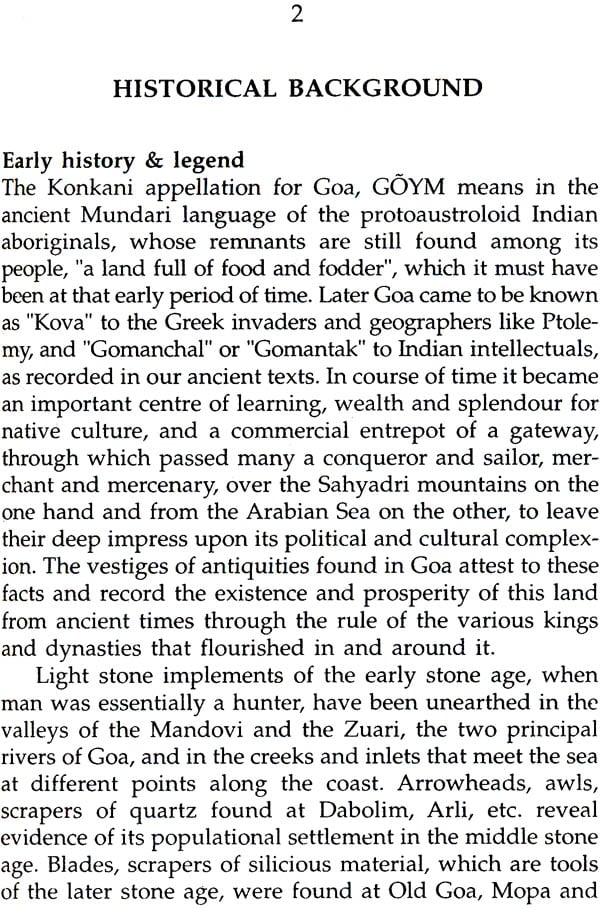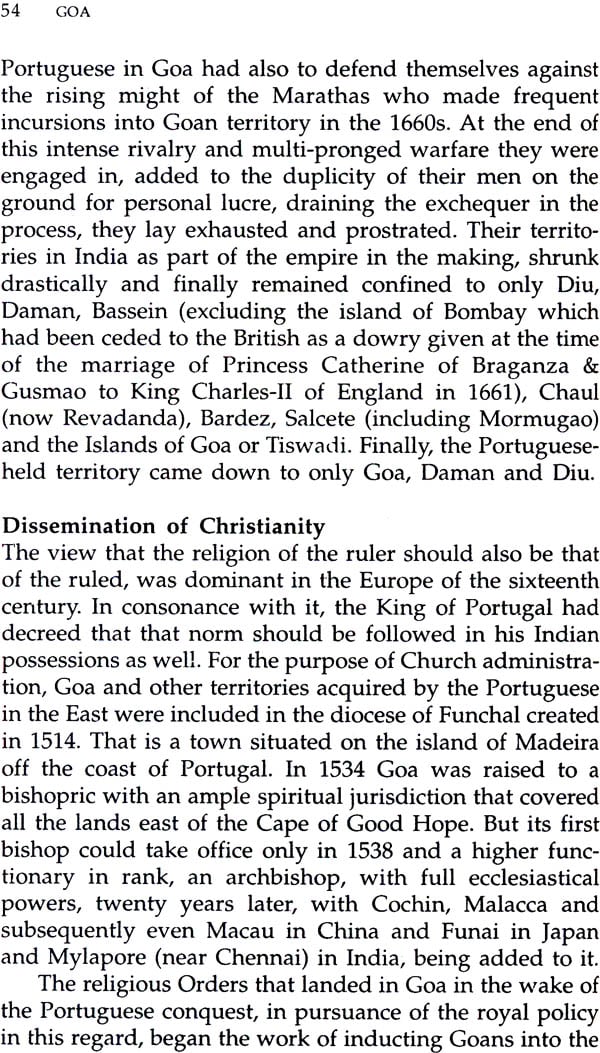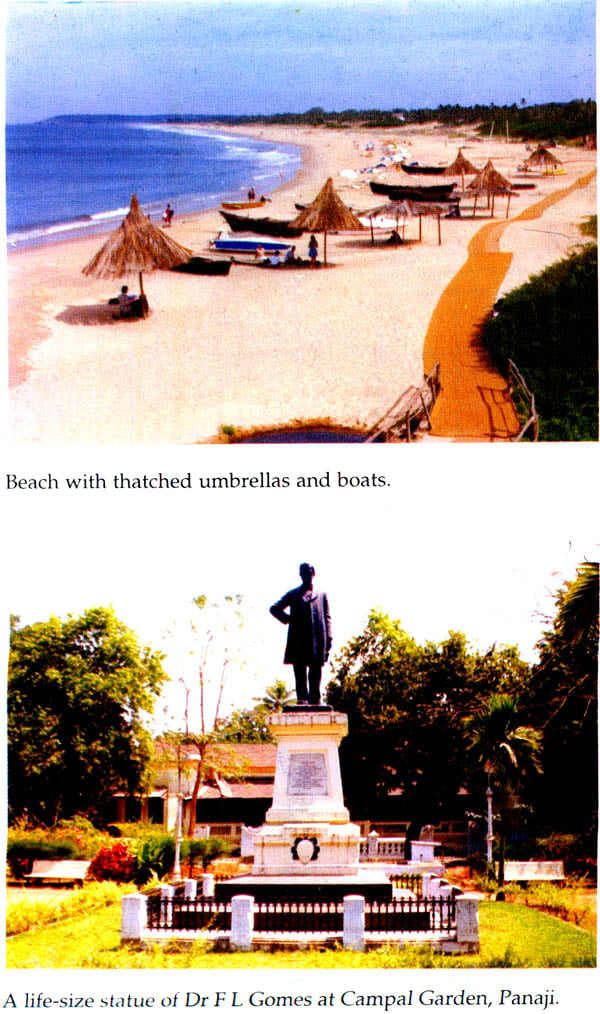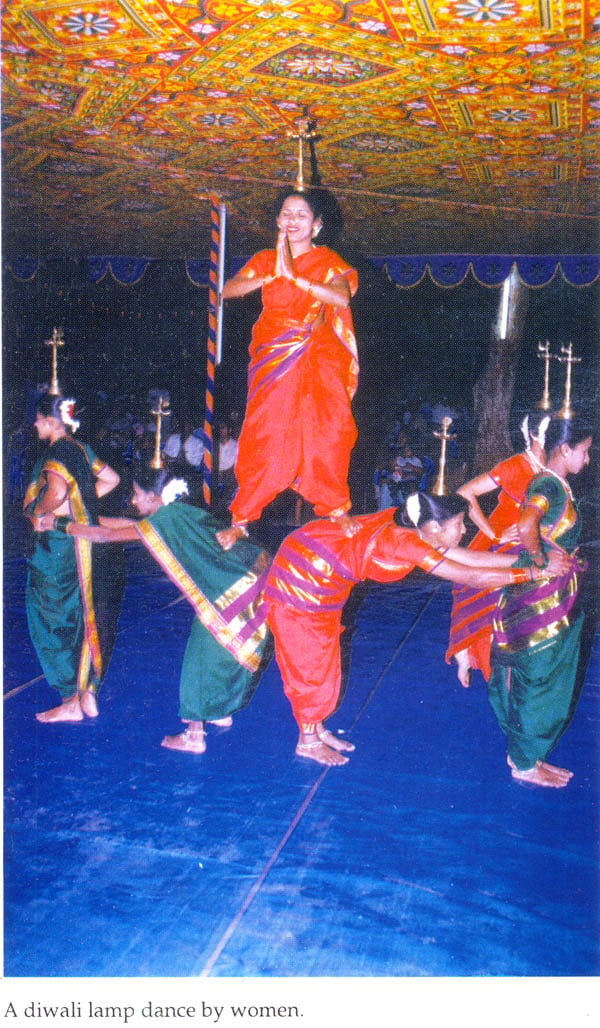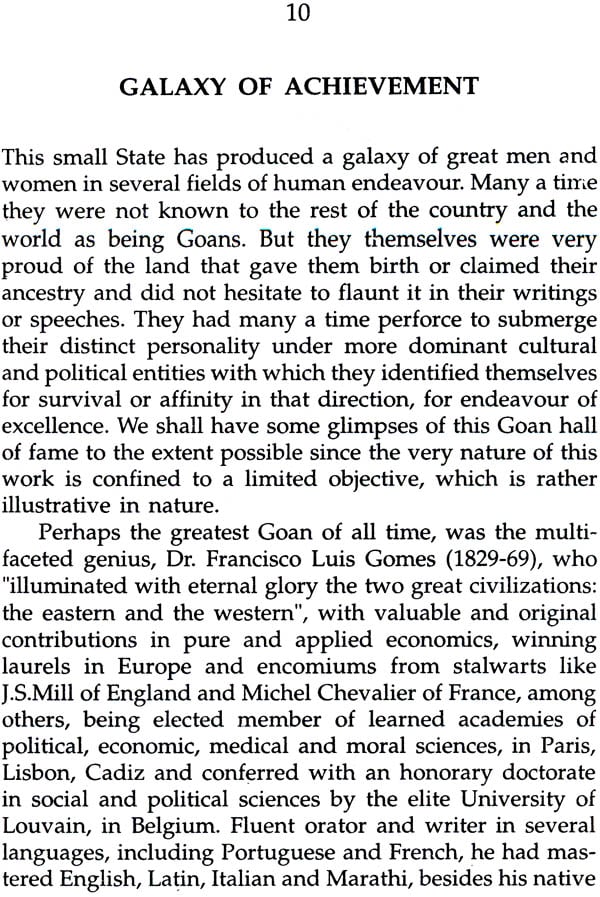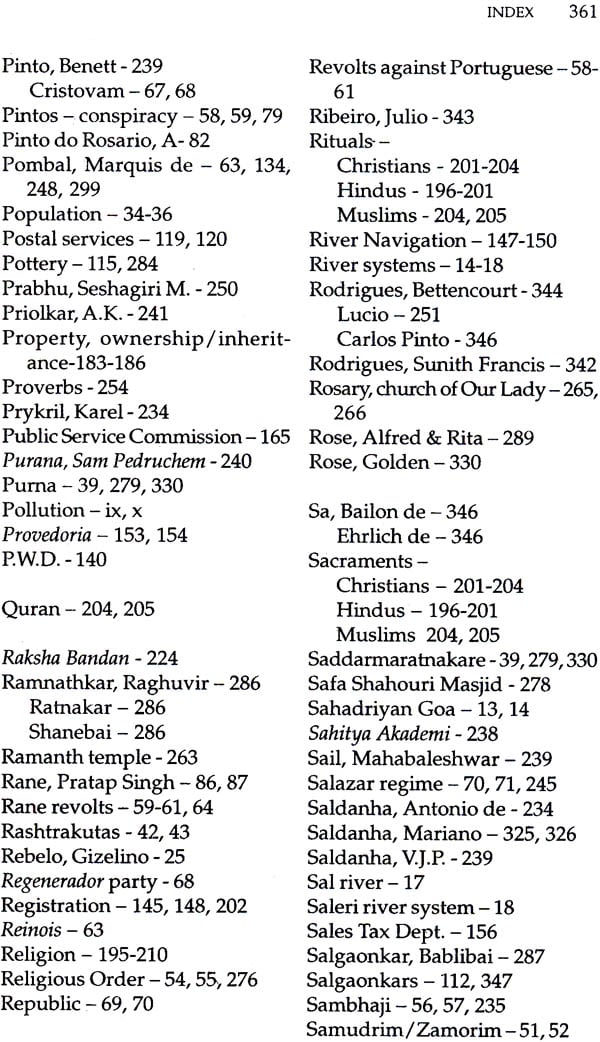
Goa
Book Specification
| Item Code: | NAD438 |
| Author: | Olivinho Je Gomes |
| Publisher: | National Book Trust, India |
| Language: | English |
| Edition: | 2004 |
| ISBN: | 8123741391 |
| Pages: | 385 |
| Cover: | Paperback |
| Other Details | 8.5 inch X 5.5 inch |
| Weight | 510 gm |
Book Description
The book presents a holistic view of physical environment, historical background, economic order and social fabric of Goa. It also provides insight into cultural heritage, religious practices, literature, folklore and other aspects of the province.
Olivinho J.F. Gomes (1943- ) formerly with the Indian Administrative Services is a sociologist, his torian and poet. He has also served as I him Vice Chancellor of Goa University.
Goa, the green strip of land bordering the Arabian Sea, that now forms the twenty-fifth State of the Union of India, has been bountifully blessed with natural and human resources. Famous in ancient Indian history and legend as an idyllic paradise, beloved of the gods, full of food and fodder, it fell frequent prey to many a conqueror covetous of its beauty, wealth and location. This resulted in varied influences on its people and their culture.
Probably the earliest settlers on this land were the proto-australoids or austro-asiatics (who incidentally provided the bedrock of Indian culture) in the form of the Konka, the Kol and the Munda tribes, whose remnants still survive in the aboriginal element in Goa, as the Gauddi, the Kunnbi and the Vellip. Their ant-hill of a deit Santeri, was later adopted and enshrined as Shantadurga, the goddess of peace, and continues to be the presiding divinity of Goan culture in particular and Konkani culture in general. Their folk beliefs and practices were absorbed over a period of time into the mainstream of the later Hinduism.
Later came the Dravidians, inheritors of the great Indus Valley Civilization, who put their own imprint on its language and script. The essential character of its language, Konkani, was, however retained and reinforced with the arrival of the Indo-Aryans from the northern and north-eastern parts of the country and their settlement in the Konkan, particularly in Goa, in the early centuries of the Christian era. Apart from the Sumerian and Scythian traces in the Indo-Aryan culture, the rule of the Satavahanas, the Mauryas, the Bhojas, the Rashtrakutas, the Shilaharas and the Kadambas exercised their respective influences on it.
Muslim rule succeeded these dynasties of rulers, with its own distinctive impact on its language and culture. That culture became eclectic and composite in nature, without abandoning its substantial core which it jealously guarded even when faced with the mightiest attack on its ethos by the Portuguese, the last of the alien rulers who stayed on the longest on its soil. These rulers attempted vigorously to impart to it a western Christian face or rather a Latin Christian ambience, while trampling to some extent on the local native culture, though they did look upon the latter with favor for a time and even contributed to its development after the initial flush of destruction. The long spell of four hundred and fifty years of Portuguese rule brought about a considerable change in Goa, setting it apart from the rest of India - of which it is a geographical and cultural part - and inculcated in its people a cosmopolitan outlook on life. This has enabled them to feel at home in the worlds of both the East and the West and to overcome the apparent difference of the two strains of civilizations, perhaps mauling their essential self- identity in that process.
A greater access to privilege and position under an alien regime, which the upper classes among them achieved by dint of conquest, enhanced that identity undoubtedly, with a lesser sense of discrimination than what was experienced at the hands of other colonial rulers. As a matter of fact Goa was reported to have been privileged to be on par with metropolitan Portugal, though that might have been diluted now and then by some acts of aberration and prejudice of individual governments and their officers. That brought about the finer graces of civilization in the State, based on eastern economy and western etiquette, and endowed Goa with a fairly developed social life and the finest institutions of higher learning, in the seventeenth century in particular, that compared with those of the best in Europe at that time.
The college of St. Paul, the ruins of which can be seen today in the form of a marble archway in Old Goa, was renowned as a University-level institution at that time, to which flocked students from all over Asia. A School of Medicine, the oldest of its kind in the continent; the earliest Municipal Council, established soon after the Portuguese conquest in 1510, for the capital city of Goa; and a printing press of moveable types, the first to be installed in the subcontinent in 1556 in Goa, to bring out, among others, the first printed books in any Indian language, in Konkani, were other specimens of that outstanding endeavour.
Goa has moved a long way since those times, to build up an educational complex of institutions, with a network of primary, secondary and higher secondary schools spread out in its villages and towns, with its own university at its apex since 1985, on modern lines. Affiliated to it are colleges of long standing and others of more recent date, imparting undergraduate instruction in the arts, the sciences, and commerce, and professional colleges for medicine, dentistry, engineering, shipbuilding technology, hydrology, marine sciences and the latest in biotechnology, physics including electronics, computers, microbiology, zoology, botany, chemistry, management, earth sciences, and even environmental sciences and oceanographic research, as also the traditional social sciences, humanities, foreign and Indian languages including Konkani. Postgraduate and Ph.D. courses and research programmers in all these subjects are administered on the main University campus on the Telegram plateau that overlooks the confluence of the river Zuari with the Arabian Sea.
Pollution has been an irritant between the government on one hand which has embarked on the industrialization of the State, with a view to generate wealth and employment opportunities, and those concerned with the environment on the other who resist some aspects of it as more and more industries keep raising their heads on its once tranquil landscape. The earliest of these traumatic events which had shaken the people, was the fish mortality witnessed on a beach, caused by effluents from a factory which, despite this occurrence, continued to expand up to the sands, regardless of protest and censure from people and expert committees monitoring its pollution. Similarly, chemical and other industries have been coming up in the State to take advantage of tax holidays granted by the government. They employ a large body of labour, mostly brought in from outside the State, leading to problems of demography, hygiene and others, while not providing enough relief to local employment. Some polluting industries have been successfully warded off, but not others with stronger clout. However, non-polluting industries are being given ample encouragement.
Building activities on a large scale, with stagnant water left on sites, have given rise to incidence of malaria after its declared eradication. The ban imposed by the Union Environment Ministry on building within a 500-metre range from the high-tide shoreline, has often been ignored. A study presented at the National Institute of Oceanography, located in the State, revealed that hotel sewage is polluting Goa’s rivers and the sea into which they flow, while another study dwelt on the pernicious effects of open-cast mining on the water sources and aquatic life, but to no avail. Reports have also appeared about sea-level rise off the Goa coast. Renewed fears about the Kaiga nuclear plant in the vicinity of the State have aggravated due to the collapse of a dome in it in mid-May, 1994. Then comes the Konkan Railway, which uses Goa as a corridor, seen as a harbinger of development and providing a fast route to Mumbai, no doubt, while it is also perceived by the people affected adversely by it as fraught with hazards. Of these indications are already visible, like sinking of mud embankments, hills razed to the ground, water-logging during monsoons, collapse of tunnels in fragile soil, and the rail line pouching through once fertile ‘khazan’ alluvial soil and perennial lakes near monuments and sites sacred to religion.
| Introduction | vii | |
| 1 | Physical Environment | 1 |
| 2 | Historical Background | 37 |
| 3 | Economic Order | 90 |
| 4 | Administration | 131 |
| 5 | Social Fabric | 172 |
| 6 | Religion and Ritual | 195 |
| 7 | Feasts and Festivals | 211 |
| 8 | Language, Literature and Folklore | 230 |
| 9 | Cultural Heritage | 256 |
| 10 | Galaxy of Achievement | 297 |
| Bibliography | 349 | |
| Index | 353 |
